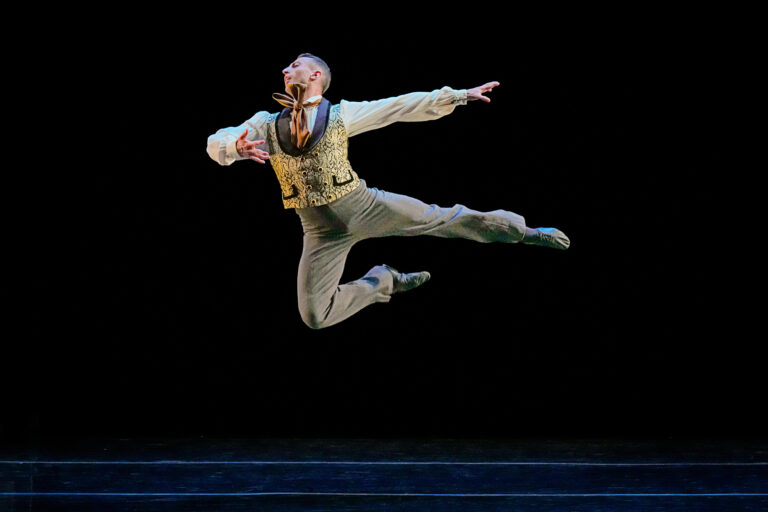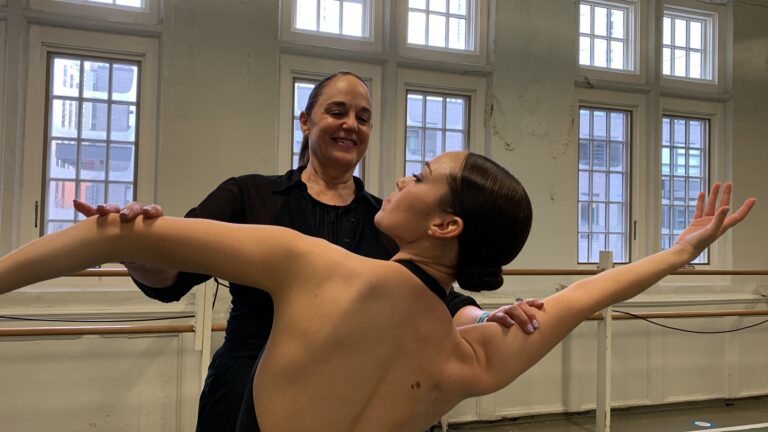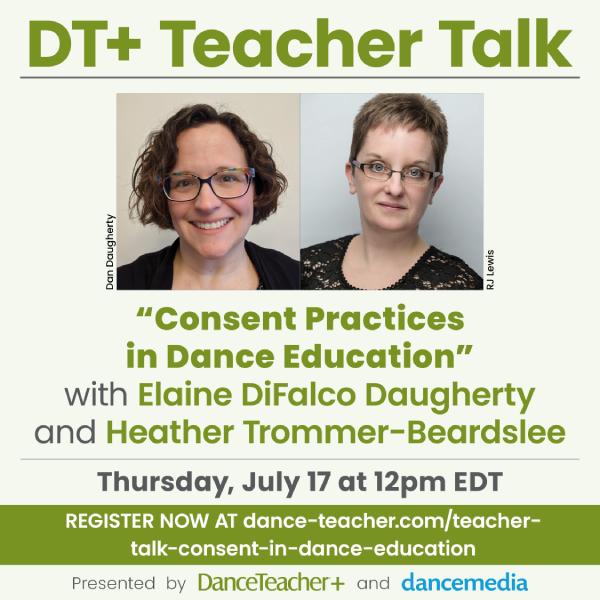
What’s it like when your boss has known you since you were 2 years old? Or when your workplace is the same place you met your first set of friends in and where you learned your first dance steps?
Strange as these scenarios might seem in any other industry, it’s a situation many dance teachers find themselves in: teaching at the same studio where they grew up dancing.
Dance Teacher talked to five dance teachers about all the rewards and challenges that come with working at their home studios.
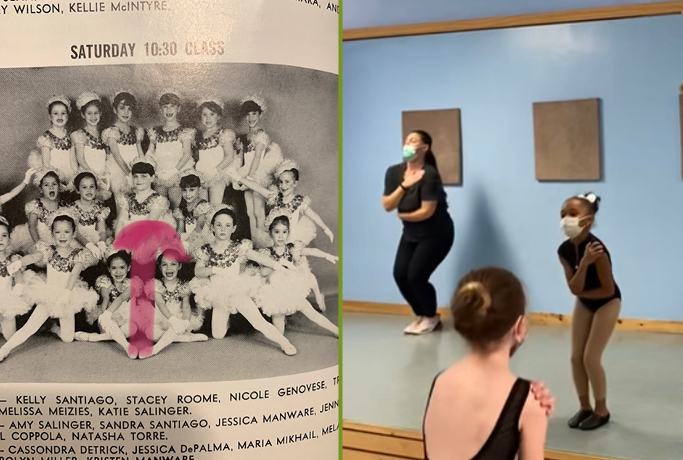
Jennifer Pollio
Assistant director, Dance Unlimited, Hamden and Branford, CT
Her journey to teaching: Pollio began training at Dance Unlimited at age 2, and started assisting baby classes at age 12. When she was 16, the studio’s director, Janet Gambardella Bracale, gave Pollio her first technique class, and at 17, a competition duo to choreograph. “It just took off from there,” says Pollio, who stayed on teaching at the studio after high school.
On the pride of teaching where you grew up: “I was there the year it opened, so I’ve literally been growing with the studio. And it’s amazing because it makes you feel like a bigger part of it—where the studio started and where it’s headed. When the studio does well at competition, regardless of whose dance it is, when you grew up there you have this feeling of joy and excitement that I don’t think I would have if I was just someone that came in a few years ago.”
On imparting the studio’s history to students: “They love hearing past stories. Not only do I tell them about Janet (Dance Unlimited’s director) teaching me, but I have taught other teachers. And that blows their mind! It kind of ties everything all together, and it makes them realize that this is real. This is a family.”
On the importance of boundaries: Pollio says the only challenge of teaching at a studio where she has so much history is keeping clear boundaries—especially since her boss has known her since she was 2. “Sometimes you just feel so comfortable,” she says. “The hard thing is keeping those lines where they need to be, especially while in the studio.”

Rachael Poole Clark
Jazz teacher, The Ballet Conservatory, Lewisville, TX
Her journey to teaching: After studying at The Ballet Conservatory for 10 years, Clark went on to college dance team at the University of North Texas and, eventually, professional cheerleading. She taught dance occasionally on the side, but eventually Clark found herself missing the studio environment and sent what she called “a fearful email” to The Ballet Conservatory’s director, Kelly Kilburn-Lannin, to ask her if she could teach. Clark started out with one jazz class, and since then her staff responsibilities have grown over the past 13 years.
On having to prove herself: “I really wanted to be impressive and make Kelly proud of me,” says Clark. In her first year, she even went out and bought a ballet dictionary to make sure she still knew all the proper terminology. “You really have to prove yourself because it’s a studio that’s been in the community for 35 years—she’s not just going to let anybody come in and teach.”
On how her relationship with her director evolved: “My boss was someone who I called ‘Mrs. Lannin.’ I never imagined I would call her ‘Kelly’ in my life. I was not the dream student—I had an attitude, and I was lazy at times. Kelly pushed me a lot, and I really appreciated her for that. That’s why I was so afraid when writing that initial email to ask her for a job. It’s a great feeling to have Kelly as my mentor and boss, considering the rough beginnings of my teenage years.”
On modeling respect: “I tell the kids that their ballet teacher was my ballet teacher. I can uphold the respect that those children need to have for the older teachers at the studio, because I still respect them. And just because I might be younger and edgier doesn’t mean that I don’t respect what they instilled in me as a young dancer.”
On her favorite studio traditions: Clark loves being a part of the traditions—like the Halloween sleepover and the annual production of Peter and the Wolf—that she experienced as a young student. Her favorite tradition to relive as an adult? “At recital, they always play the same exact intro music from when I was a little girl—the beginning of The Little Mermaid. When you hear that song, you get goosebumps. Your whole life rushes through your body, because it’s the same dreamy melody that you grew up with year after year.”
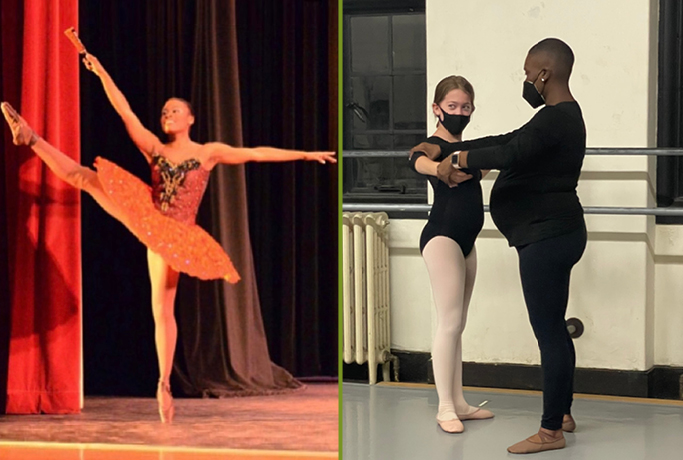
Amber Echols
Ballet, jazz and hip-hop teacher, Hyde Park School of Dance, Chicago, IL
On her journey to teaching: Echols started dancing at Hyde Park at age 8, and participated in the school’s teacher training program beginning at age 12. She attended Northern Illinois University and danced professionally for Dayton Contemporary Dance Company and elsewhere while continuing to teach at Hyde Park during the summers. She joined the faculty full-time two years ago.
On going from student to colleague: Echols says that some of the teachers and accompanists who knew her as a child will tell her things like: “You’re all grown up, but I just can’t see you as an adult! I remember you at the barre, figuring out your body and who you were.” They joke about it, Echols says, but “when they actually see me teaching, they see the adult Amber.”
On supporting her students: “The older students especially really like to take class with me because they know that I went through what they are going through right now. I like to sit down with them sometimes and listen to them tell me how everything is going.”
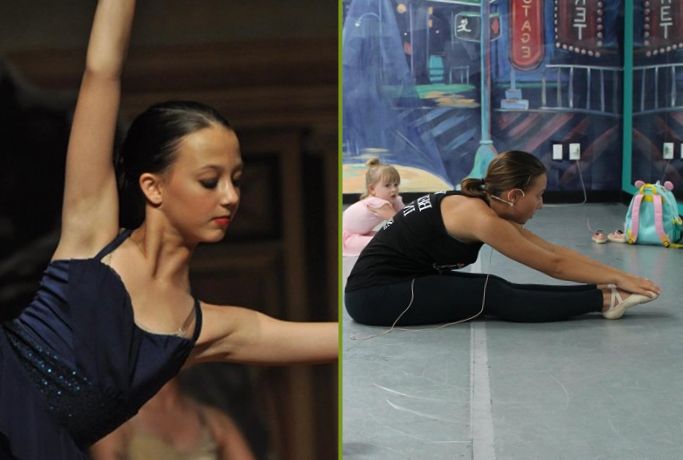
Leah Jackson
Ballet, jazz, tap, acro and hip-hop teacher, Showcase Dance Studio, Manassas, VA
Her journey to teaching: Jackson began dancing at Showcase at age 11, and after graduating high school decided she wasn’t interested in dance anymore. A year later, the studio’s director asked Jackson to substitute for a teacher on maternity leave, and she realized how much she missed being in the studio. From there, she interviewed for a teacher position and was hired two years ago.
On the pressure of teaching at her home studio: “I have taught at a few other studios, and it’s so different. There’s more pressure teaching at a studio you grew up in, and it pushes me to make sure I’m really on top of everything and putting my best foot forward. It’s good pressure—it’s pushing me to be the best teacher that I can be.”
On earning students’ respect: “In the beginning I walked in and they were like, ‘Oh my gosh, Leah!’ I had to say, ‘Hey, I know we all grew up together, but I am your teacher now and I want you to respect me the same way you respect all the other teachers here.’ From the start I just put that in place.”
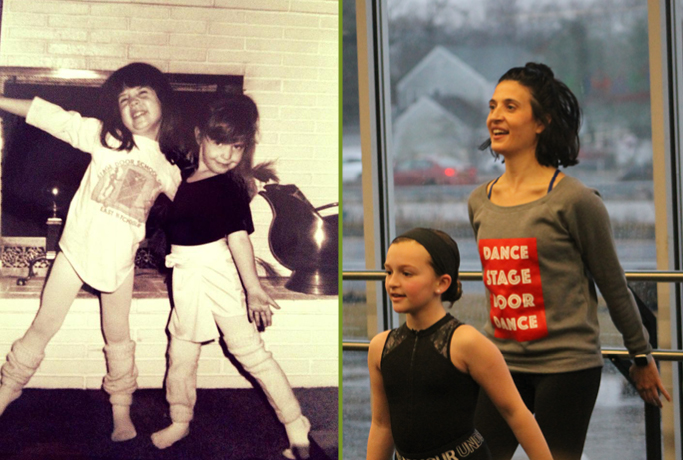
Mary Giattino
Owner, Stage Door School of Dance, Patchogue, NY
Buying the studio she grew up in: Giattino didn’t just grow up at Stage Door—the studio was owned and operated by her parents. After high school, Giattino taught at the studio once a week while pursuing a professional career, and then 10 years ago, her parents retired and she bought them out.
On her connection to her students: “I look at the kids inside my classroom and I see myself in every one of them. The cool thing about being a dance teacher is being able to see yourself at all those different ages, to be able to connect to that part of us. That’s where so much creativity can come from, when we remember what it’s like to be 5, 7, 12, 13. So the neat thing is knowing I was just there, it was just me. When it’s the school you grew up in, it’s just so easy to see yourself in all of it.”
On the challenges of following in her mother’s footsteps: “When I first bought the studio, it felt like everyone’s eyes were heavy on me. Will she do it like her mother? Will it be different? I am a little stricter than my mother, so at first it was a tough transition. But it felt natural about a year in. You just have to own it—people feed off of confidence.”
On keeping the studio’s history: “It’s so cool to be teaching the children of the girls I danced with, and seeing the third generations—some even fourth generations—go through Stage Door. We have this awesome timeline wall that has memories and history—it’s my favorite part of giving a tour. You can’t put a price tag on that.”



